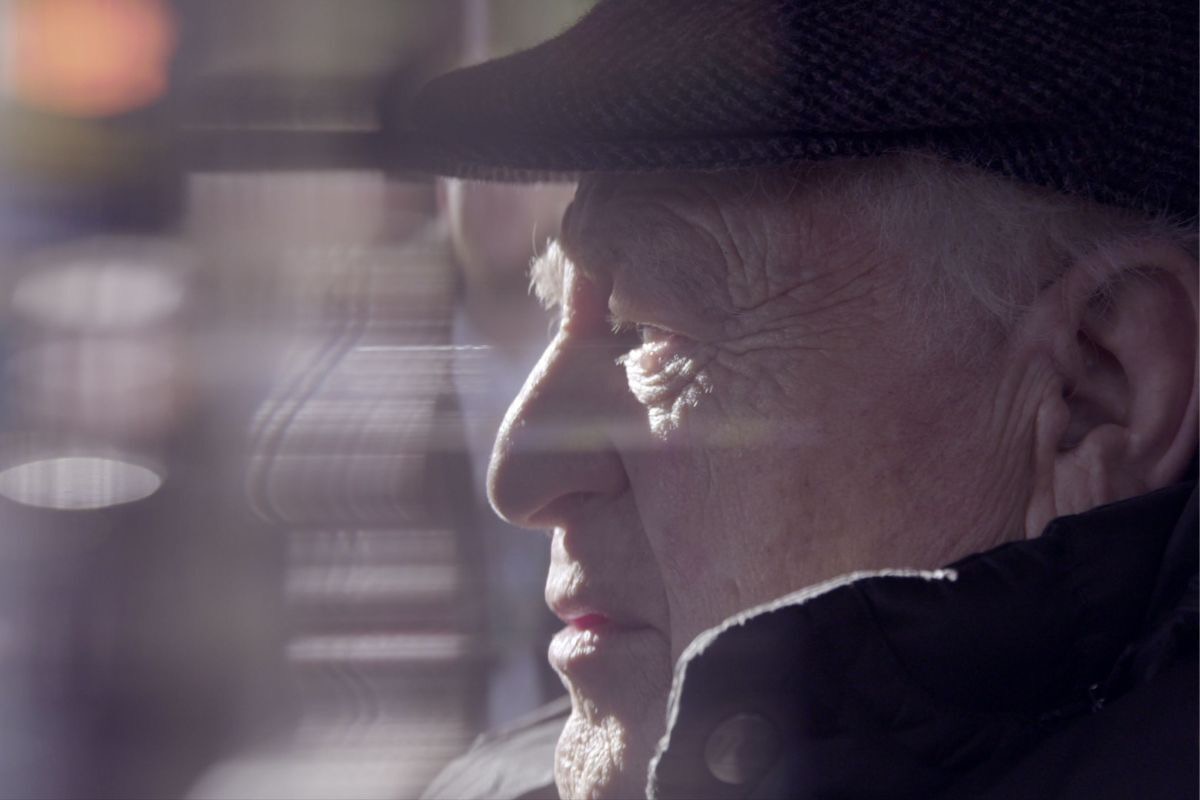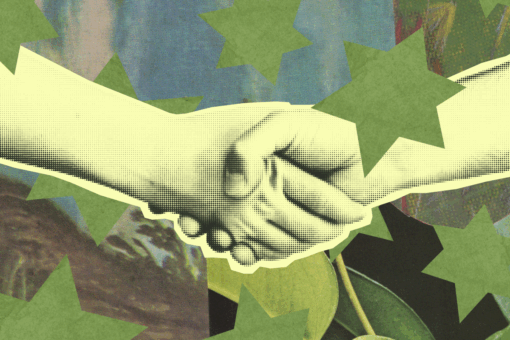How trauma inspires art is the subject of a new documentary “The Wild One,” directed by French director Tessa Louise-Salomé, which premiered at the Tribeca Film Festival on June 11, 2022 and is playing online through Tribeca at Home starting tonight. Narrated by Willem Dafoe, the enigmatic documentary takes a look at the eventful life of Jack Garfein, a Jewish actor, director, producer and Holocaust survivor. Garfein survived eleven concentration camps, including Auschwitz. After immigrating to New York, he went on to play a key role in the mid-20th century American acting tradition, working with Lee Strasberg at the Actors Studio and running in the same circles as giants of the era like Samuel Beckett, Marilyn Monroe and Elia Kazan.
The film takes an impressionistic approach, weaving between atmospheric archival footage and modern-day interviews to tell an elliptical, nonlinear account of Garfein’s harrowing childhood in the Holocaust and his tempestuous career. The two films he directed, “The Strange One” (1957) and “Something Wild” (1961), tackled themes like segregation, fascism, trauma and rape — consequently ruffling the feathers of contemporaneous conservative American audiences and Hollywood’s stringent censorship regulations.
The film plumbs the way his artistic choices were connected to his traumatic childhood. In one affecting anecdote, Garfein recounts learning to cough convincingly to repel the concentration camp’s guards when they came to find prey to sexually exploit: “Act sick and they’ll leave you alone.” In the clip, he demonstrates extremely realistic coughing and calls it an early acting experience. The documentary examines the way he processed his life through artistic expression – and the way his survival of the worst traumas inspired his courageous and controversial artistic choices.
I spoke with filmmaker Tessa Louise-Salomé over email about the film’s origins and discovering her own previously unknown Jewish ancestry.
This interview has been lightly edited and condensed for clarity.
Tell me about how this film came to be. What drew you to the story?
It was 2015 when I met Jack. At the time, he was living in Paris, leading classes at his acting studio. I think I felt the way most people do when they meet Jack — something between astonishment and elation. He has this personality, this way of recounting stories from his past, that is entirely unique. And his story of surviving the Holocaust as a child, then finding this refuge, this meaning, in his art when he came to the United States — it was a story that was absolutely astounding.
The other part of what drew me to this story was rescuing Jack’s legacy. There’s been somewhat of a recent discovery of his cinema, but his films, “The Strange One” and “Something Wild,” remained in obscurity for decades after they were censored. His work, like himself, is utterly singular — in its style, its acting, its audacious subject matter, its vision… It’s the vision [of someone] who survived a historical catastrophe taking a critical look at postwar America. In his work, and in his life, there is this incredibly human message about freedom and resilience that I felt needed to be shared.
Why is this an important story to tell?
Are we in the clear regarding human rights, racism, genocide, abuse of power, censorship and so on? The world we live in is still troubled and scarred by these realities. That was one of Jack’s messages: “Keep your eyes open.”
His other crucial message as a survivor of the Holocaust was that art is a path for transforming traumatic experience. He recognized the therapeutic virtues of art and devoted his life to interrogating and elevating the craft of acting as a response.
This film cuts between Jack Garfein’s theatrical and cinematic career trajectory and his story of surviving the concentration camps. What did you hope to convey by interweaving these stories?
To recount such a long and full life in only 90 minutes was nearly impossible. We had to select moments, clues, flashes of memories… almost like a puzzle where we were gathering the pieces of his life. The interweaving of these two through lines sort of imposed itself from the beginning: one thread following his youth and the Shoah, the other timeline capturing his career as an émigré artist over the next 70+ years. So his experience of the Holocaust comes back, again and again, in recurring sequences as if it had been casting a shadow over his whole life. And it did… It also profoundly shaped his cinematic vision and his approach to acting.
Jack himself would intermingle all periods of his life. He would constantly jump from one story to another. When you were with him, he’d sometimes start with an anecdote about Hollywood, then recount a story about what he lived through during the Holocaust, and then — with a Jewish sense of humor — finish with a joke. It was really a mirror of his identity as a survivor, how he fashioned himself as an artist to overcome what he’d been through.
In this film, the Jewish story is a story of survival, and survival through creativity and art. What’s your Jewish story?
It’s funny that you’ve said this. I always felt attracted to Jewish culture and music, and to Judaism, though I never knew much about my family background. At some point while making the film, I did a DNA test and I found that, not only was I of Ashkenazi descent, but also — and the test was very precise — that my family had come from the very same region as Jack Garfein in the Carpathian Mountains… I’ve always been drawn to his story, but this discovery of my roots deepened the connection even more for me.
Wow. How did the discovery affect you?
Since nearly all of my time has been devoted to working on the film, I haven’t been able to dig further into my Jewish lineage or the stories behind it yet. But discovering that I was from the same region as Jack profoundly transformed my relationship to the film, especially since it was completely unexpected! I went from thinking we had almost nothing in common (beyond both being directors, of course) to realizing that we shared this common heritage. It greatly strengthened my connection to his story and made me feel even closer to it.
How do you think his European Jewish background influenced his work? And what was the story behind his censorship?
Europe and America had, and still have, profoundly different relationships to the memory of the Holocaust, and Jack approached conservative and still-segregated American society in the 1950s with a much sharper, more critical eye after what he’d seen and survived in Europe. He had a unique perspective on American society as a Jewish and European émigré artist.
Jack’s experience with censorship was volatile, to say the least, and in many ways unprecedented. When he made “The Strange One” (1957), he was a first-time director, and 20 minutes of the film were cut for unfavorable depictions of American military authority — images that likened their authority to fascist rule — as well as depictions of homosexuality, torture scenes and racial segregation. Jack lost his 10-picture contract with Columbia Studios after defying Harry Cohn’s orders that he not include the scenes featuring black actors that portrayed racial segregation around the military academy’s gates, since it would prevent the studio from securing distribution in the South. Jack didn’t back down: He filmed it anyway, and because of it, he would never make a film in Hollywood again.
What works influenced the documentary’s style? Did you draw on any Jewish influences?
The works of Aharon Appelfeld and Primo Levi were important to the making of the film; Jack frequently cited Primo Levi. At the same time, he loathed the representation of the Shoah in movies. Jack was a voracious reader of literature and history and, particularly concerning the Shoah, he refused, detested, any direct representation of it in cinema or, more generally, any direct visual representation of it. Yet, to the extent that cinema is an art that can capture the unsayable, the unrepresentable — through ellipsis and subtext — he did see its capacity to broach the subject. In his cinema, the memory of the Shoah is present everywhere, but only implicitly; it’s there as an absence… or as something that casts a shadow over the present.
On the other hand, making a historical documentary about Jack’s life necessarily entails a certain relationship to the image. But “The Wild One” attempts to remain as close as possible to his feelings about representing the Shoah onscreen, and to his own personal experience of its catastrophe, by depicting these historical events from the point of view of a child.
In this sense, the work of Aharon Appelfeld was especially key. Child survivors of the Holocaust are a very particular group of witnesses who sometimes succeeded in extricating themselves from the hell of their reality through the force of their imagination. It is this perspective of the child that Jack had, which the documentary tries to capture.
“The Wild One” is playing the 2022 Tribeca Festival, and is available to stream for U.S. audiences through Tribeca at Home until June 26, 2022.



